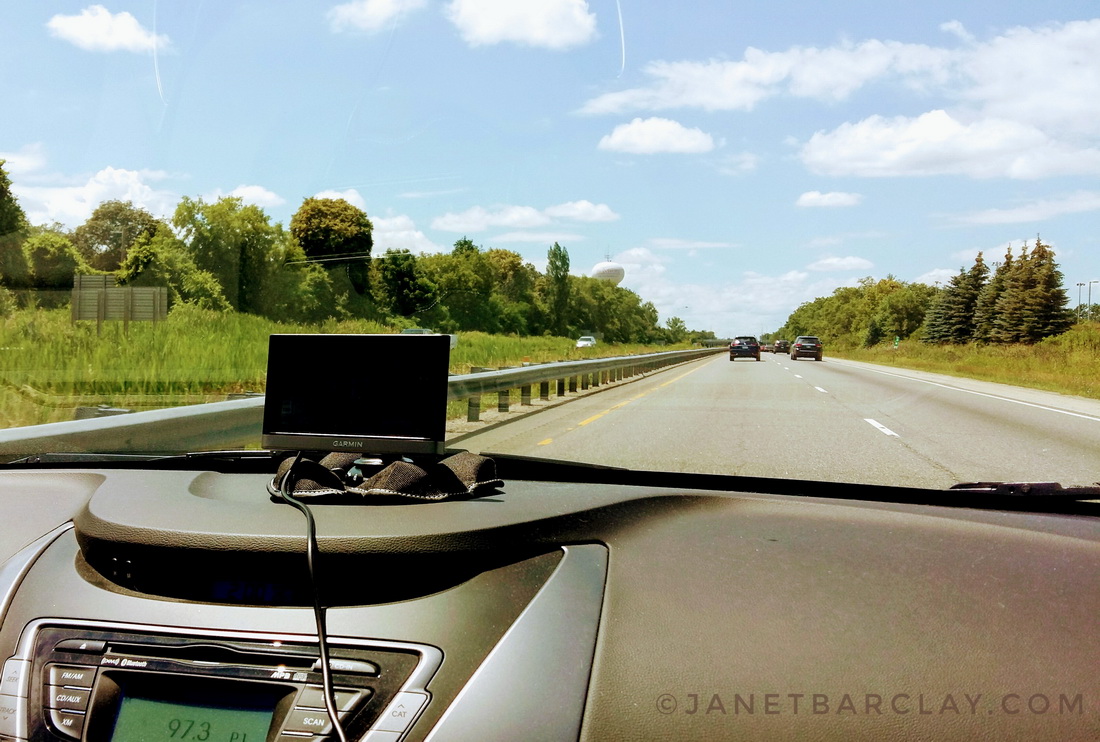How well-organized is your blog? [blog navigation quiz]

This page may contain links to Amazon.com or other sites from which I may receive commission on purchases you make after clicking on such links. Read my full Disclosure Policy
When it comes to blogging, we all share the same three objectives:
- Attract people to your blog.
- Keep people on your blog.
- Encourage people to share your blog.
Today I’m going to talk about the second objective: getting people to stick around after they land on your blog. The more time readers spend on your blog, the better your chance of making a lasting impression.
One of the best ways to achieve this is through your blog navigation. You want to make it as easy as possible for readers to find the type of information they were looking for in the first place.
Let’s take a closer look.
Depending on your score, you might have the urge to do a little housekeeping on your blog. Before you jump into that, here’s a bit more information about the various blog features I mentioned in the quiz.
Categories
Categories act as a Table of Contents to your blog. Unlike a book, where related information is organized into chapters, you might blog about a certain topic several times over the span of many years. Organizing your posts into clearly defined categories will help readers find those posts with little effort.
I’ve recently worked with a couple of clients who hadn’t categorized their posts from the start. One was quite new and only had a few posts, but the other had over 1000 published posts, dating back to 2006. In both cases we were able to break their current and future content into a few distinct categories. Now their readers can find the information they want, quickly and easily.
In other words, categories are good. Going overboard is not so good.
When I started blogging back in 2006, I wrote about anything that crossed my mind, creating new categories on the fly. I discovered that instead of being a helpful guide, a long list of categories makes it difficult for readers to figure out where to go next.
Before starting my second blog three years later, I developed a list of the categories I would blog about. Taking this step has kept me focused on those topics, and helped keep my content organized for my readers at the same time.
Categories should be fairly broad, with minimal overlapping. If one post fits under three or more different categories, you probably have too many. It’s better to have one category called “Social Media” with 10 posts in it, then to have separate tags for each network with only one or two posts each. You can save the individual network names to use as tags (more on that in a minute).
Even though one of my clients had previously pruned her blog categories list, she felt it could be even more streamlined. After reviewing her categories, we were able to eliminate five without leaving any posts uncategorized.
Tags
Earlier, I said that Categories are basically the Table of Contents for your blog. In this analogy, think of Tags as your index. Here’s where you can get specific. Going back to my earlier example, if you have a Social Media category, you might use the individual network names (Facebook, Instagram, Twitter, etc.) as tags.
Don’t make the common mistake of confusing tags with keywords. Tags are not the same as keyword metatags (which no longer have any SEO value anyway). They are a navigational aid for your readers, so don’t overwhelm them by offering multiple options for the same concept.
If you’ve been using tags for a while, you may need to do a little clean-up. I definitely need to do it on Your Organizing Business! Here’s how I plan to go about it:
- Delete any tags with no posts associated with them.
- Look for tags that are basically the same, e.g. blogging help, blogging tips, blogging advice. Choose the best one and delete the others.
- Delete tags with very few posts associated with them. If your reader loves a post and clicks on the tag, but the only post that comes up is the one they’ve just read, you’ve just lost them.
If you haven’t been using tags, it’s never too late to start. Just add them to your new content as you publish it. You can add them to your existing content here and there when you have small pockets of time to fill.
Since you may have hundreds of tags even after a clean-up, you probably won’t post a tag list as you might do with categories. What’s more customary is a tag cloud which displays your most frequently used tags, with the text sizes varying according to popularity.
In most cases, each post will have a list of its tags at the beginning or end, linked to other posts with those tags.
Related Posts
Linking to related content within your blog is a great way to keep readers on your site.
As you write a new post, include a link to one of your earlier posts when it’s appropriate. You’ll see an example of this later in this post. Leave a comment to let me know if you find it!
WordPress and other popular blogging platforms offer a number of options for automatically displaying posts which are similar to the current one. Earlier this year, Shaun Quarton published a list of the Six Best Related Posts Plugins for WordPress, so you may want to check that out if you don’t already have a Related Posts plugin.
Search
If you’ve been blogging for a year or longer, a search box could be the most important feature of all. People today are very busy and have short attention spans. If someone is looking for specific information, they don’t want to scroll through pages of your archives just to find out whether you’ve ever covered that topic in your blog. A search box will let them locate wherever you’ve used a specific word or phrase, regardless of how you’ve categorized or tagged your posts.
Archives by Date
By the way, the Blog Archives one was a trick question, with no points either way.
Archives by date have very little value to your reader. How likely is it that someone will go to your blog specifically looking for a post you published last May? Unless it’s connected to a particular event, it’s not likely at all. Do you even remember when you wrote your own posts?
Best Practices
Here are a few of the strategies that have worked for me.
- Choose your categories up front.
- Display your category list prominently, in a sidebar, in your footer, or even in its own menu.
- Stick to your chosen categories as closely as possible, unless your business or blogging strategy changes.
- Keep one category sufficiently broad that you can go off-topic from time to time. Just don’t call it Uncategorized. That looks like you either forgot or couldn’t be bothered to “put it away.”
- Use your category list to organize your blogging ideas.
- Remember that tags are for organizing related content. You probably don’t need as many as you think.
- If you delete tags or categories, redirect them to the new ones to avoid breaking any links. Here’s a great tutorial for setting up Redirects from Hubspot.
- Make sure your Search box won’t display content you don’t want anyone to find, such as a Thank You page.
- If you’ve been blogging for a really long time, you’re probably proud of that, and you should be! But there’s no need to have a list of dates as long as your arm taking up valuable screen space. Simply mention in your bio that you’ve been blogging since XXX. Or, if you really want to keep your Archives by Date, display them as a dropdown list.
How did you do on the quiz? Feel free to share your results in the Comments.
Photo by Dmitry Rukhlenko / depositphotos
Quiz created with Interact quiz builder

Janet Barclay
I eliminate stress for my clients by hosting, monitoring, and maintaining their WordPress sites so they don’t have to worry about security, downtime or performance issues. When I’m away from my desk, I enjoy reading, photography, cooking, watching movies, drinking tea, and spending time with my family.




Thanks Janet. This is helpful!
I’m glad you found it! This is the article I had mentioned to you.
Very helpful post, Janet. I adjusted my categories last year and found that it slowed to my Google search. Submitting a new site map to Google helped. But it took some time to get back into increasing search visits again. And doing too many redirects weren’t good either. I had a lot of specific categories, so making them a little more broad and combining catories seem to work for me.
I’m surprised that combining categories affected your SEO even with redirects. Thanks for the warning!
I did well overall on this quiz, but I do think I have too many categories. Maybe I will work on this next year.. a bit more streamlined. So fun to organize these tips in the form of a quiz. Did you use a plugin for this? Might be fun to do over on my blog!
I used the Interact quiz builder. It’s very cool. 🙂
The quiz says my blog is quite organized, but I know it needs work. You’ve inspired me to de-clutter my tags and categories. It was easier to find where to do it in WordPress than I thought it would be. Once I’m done, how do I create a tag word cloud?
You should see it in your WP Dashboard under Appearance – Widgets.
Thanks for the explanation of Categories and Tags. I’ve been blogging for years and you’ve finally made it make sense to me. Of course!
I’m so glad!
I actually ended up deleting all the tags on this blog because they were too random. I may re-add them in a more organized fashion in the future, but I suspect not many people use them as a navigational aid.
I answered “yes” to uses tags, but after reading the post, I’m not sure that I do. I take keywords within a post and hyperlink it to other posts. I don’t use tags because I know this may sound strange, but I think it looks messy on the page. That’s probably not a great reason. I don’t have a search feature but would love one. I don’t think the Squarespace platform has that available for the version I’m working with.
Tags don’t generally look messy. They’re usually just displayed at the bottom of the post, often just below the categories. I wonder if you’re thinking of a tag cloud?
I’ve noticed you don’t have a search feature. If I want to go back and read one of your old posts, I enter the topic and your name into Google, and I can usually find it that way.
I like blog post to be short and simple. If what I am reading interests me that I’m glad to click on a link to other posts of the same content.
Good to know, Janet! I’m sure lots of people feel the same way.